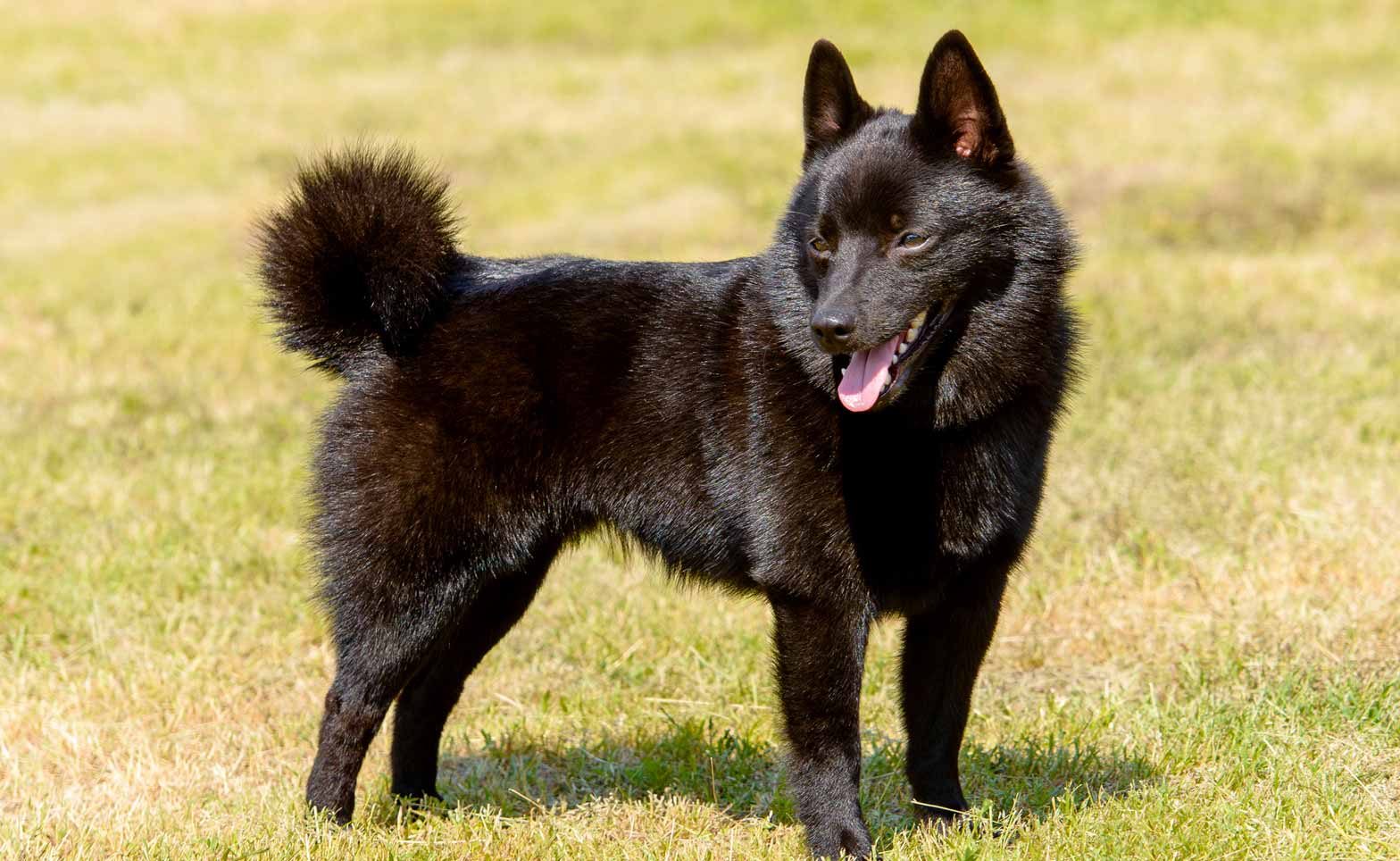-
Activity Level:
moderate
-
Shedding Level:
moderate
-
Grooming Level:
moderate
-
Trainability:
high
-
Good for Novice Owners:
moderate
-
Adaptability:
high
-
Kid/Pet Friendly:
often
-
Prey Drive:
high
-
Watchdog:
very alert
- Average Size: Small
- Average Lifespan: 12-14 years
- Registered?: aca, akc
Schipperke Dog Breed Information
Overview
Temperament
Adaptability
Health
Owner Experience
Grooming
Activity Level
Size
Life Span
Did You Know?
The Schipperke originated in Belgium during the early 16th century. Although they are considered a small shepherd-type dog in Belgium, there is some debate about whether they are a spitz-type breed.
This dog breed was popular on board ships where they operated as the chief exterminator as ships traversed the canals between the Low Countries. In addition to their rodent control duties, the Schipperke also often served as a watchdog on barges and ships as well as within the city for shopkeepers.
They were prized for their small size, quickness, and overall agility. The Schipperke was first recognized as a formal breed in the 1880s. The American Kennel Club recognized the Schipperke in 1904 as a member of the Non-Sporting Group.
The Schipperke is a small dog with a large, lovable personality. They are lively and curious with a mischievous streak. They are loyal and affectionate to their families and love being around their favorite people. Schipperkes also get along fabulously with children.
Their watchdog/exterminator background makes them naturally wary of strangers and also means they have a high prey drive. They also won’t be afraid to bark and let you know about someone or something coming on your property. Left on their own, Schipperkes can become prone to barking. However, they can be trained to contain their barking tendency.
Schipperkes are highly adaptable dogs. They do well in apartments as well as larger homes. Due to their high prey drive and urge to chase, they should only be let off-leash in secure areas.
They do well in moderate climates. As with any dog, they are sensitive to very hot or very cold weather. A Schipperke is generally okay with some alone time, but they love their families deeply and should not be left alone for long periods of time.
Overall, the Schipperke is a relatively healthy dog breed. As with any dog breed, there are some potential health conditions to be aware of. For the Schipperke, these potential health issues include patellar luxation, eye problems, thyroid issues, and Legg-Calve-Perthes disease, which affects the hips. There is also a disease called MPS IIIB, which is newly recognized and fatal. However, it can be tested in order to prevent it from being passed on to puppies.
Reputable breeders will be testing and screening their breeding dogs for these issues in order to ensure they are not being passed on to puppies. So, don’t be afraid to ask the breeder questions. Talk to them about the genetic history of the parents and ask to see any relevant health clearances and DNA test results.
The Schipperke is a moderately trainable dog breed. They are highly intelligent, pick up on things quickly, and can learn practically anything. However, they are independent dogs that can have a stubborn streak. This can be difficult for first-time dog owners to navigate on their own, so puppy training and obedience classes are highly recommended. With persistence, patience, and positive training methods, a Schipperke is capable of learning almost anything.
In addition to basic commands every dog should know, you should make sure you train your Schipperke to respond to commands to stop barking and to come when they are called. If these are not addressed during training, their watchdog tendencies and urge to wander can cause a Schipperke to bark a lot and to ignore you when you call for them.
A Schipperke has moderate grooming needs. Their coat is generally low-maintenance, but they do shed moderately year-round and experience heavier shedding twice a year as the seasons change. Most of the time, weekly brushing is sufficient to keep them comfortable and their coat healthy. But, you may want to consider increasing to daily brushing, or at least brushing a few times a week, during the heavier shedding sessions. Bathing is only required on occasion.
In addition to general coat care, you also need to care for your Schipperke’s nails, ears, and teeth. Monthly nail trimming is usually sufficient in order to keep nails from growing too long. Checking ears weekly and carefully cleaning as needed can help prevent ear infections. Practicing good dental care for dogs, like brushing teeth or using an enzyme toothpaste every day, can help prevent dental disease.
The Schipperke is an active dog breed with moderate exercise requirements. They are energetic and like to be busy. Daily walks in addition to some extra playtime and activity are usually enough for this little dog to stay happy and healthy.
They’re also quite robust for their small size, so they will likely be up for more activity if you are. Your Schipperke will just be happy to be spending time with you. They may enjoy trips to the dog park, going on a hike with you, and more. Schipperkes are also good candidates for a few different types of dog sports like agility, obedience, and even herding.
A fully-grown Schipperke usually stands 10-13 inches tall at the shoulder and weighs 10-16 pounds.
A Schipperke generally lives 12-14 years.
Schipperke is Flemish for “little captain”. Other translations include “little shepherd” and “little boatman”.






